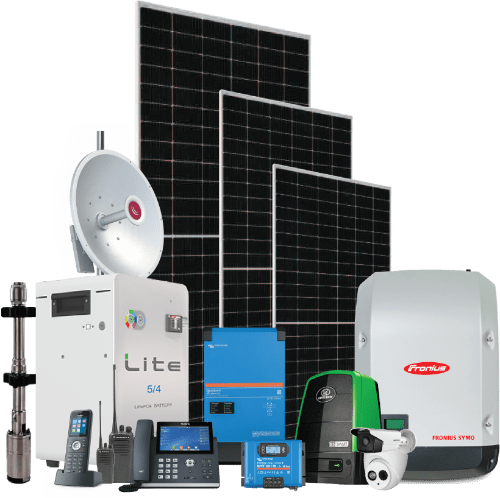
A home security system provides the means to secure your home through interconnected systems and devices that are installed on a property. A complete home security system is made up of several components.
With the ever-evolving technologies, the options in the market can be overwhelming. When consulting your home security provider, you can expect to hear a number of devices being mentioned.
Having an understanding of the components and their role in your home security system will help you make a decision on which components to choose to make up a complete system suitable for your home.
A control panel sometimes referred to as Keypad, is the main point of your security system. The panel allows you to input various commands such as arming and disarming the system. They are normally located close to doors for ease of access. They usually work with a passcode, while some have voice control features as well.
The panel also acts as a link between the home and a security company during times of emergencies. Through the panel, the security company can communicate with the home to confirm any emergencies before dispatching help.
An alternative product is a Key Fob, a remote-like device that can arm and disarm your security system when going in and out of the house. It can be operated from both inside and outside of the home.
The Alarm will go off and make alerting sounds in case of any intrusion. The noise will alert you of possible intruders as well as alert neighbors, who will hopefully come to help or help you call the police. The alarm may even startle the intruders into abandoning their plans, who knows!
These are not a crucial part of a home security system but can be included as well. These sensors will detect if a door or window is opened in your home. The sensors are placed on the adjoining sills or frames of your doors or windows. The sensors are placed to be touching and when they remain in contact then everything is secure. If a door or window is opened, the sensors’ magnetic connectors will detect that the sensors are no longer touching and will trigger an alert.
You can also consider motion sensors. As the name implies, motion sensors detect any movements in the environment when the security system is activated. Motion sensors make use of vibrations, ultrasonic waves, microwave pulses, infrared heat, or a combination of the elements to detect movements.
You can also decide to get glass break sensors. These detect if anyone is attempting to break into your home by breaking the glass on your windows or doors. The sensors work by detecting the sound of shattering glass and sending an alert. Glass break sensors are normally placed near windows or doors that are vulnerable to break-ins.

Cameras are necessary if you wish to keep an eye on the house’s exterior and interior. Before you install them, you will need to decide the best places to install cameras in your home. Should an intruder succeed to break into your home, a camera can provide visual leads to finding the person responsible. Cameras can be wireless or wired. Some have the capacity to pan and tilt hence covering a wider angle, while others are static. The latest models have night vision capability.
Your security system depends on communication lines (telephone or broadband) to communicate with the monitoring center. Intruders will often start by tampering with your property’s communication lines to deactivate your security system.
A cellular backup unit is wirelessly connected and is constantly connected. If your communication lines have been cut, the backup unit will send a signal to the monitoring center that communications are down and it will continue to send more information until help arrives.
A home security system can protect you from unwanted visitors. It can also be used to protect against environmental threats. You can opt for environmental sensors such as:
Heat sensors will create an alert when there is an increasing temperature that may be caused by fire. Heat detectors can be placed anywhere in the house, unlike smoke detectors which can only be placed in limited areas of the house.
Smoke detectors sense smoke as an indication of a possible fire incident. The best places to install smoke detectors are in bedrooms or hallways. To avoid false alarms, smoke detectors are usually not placed in kitchen or utility areas as the risk of collecting dust or other particles increases. The particles affect the smoke detectors and can cause a false alarm.
Exposure to elevated levels of Carbon Monoxide can be dangerous to a human being. Sources of carbon monoxide in a home can be from a motor vehicle, heater, or cooking equipment that runs on carbon-based fuels.
Carbon Monoxide detectors monitor the gas levels and will sound an alarm before the levels reach a dangerous point. They are usually placed outside of bedroom doors.
A consultation with our experts will help you decide which components are a must for your home security system. What components to include in your home security system will depend, of course, on your preference. However, we will also look at the profile of your neighborhood for possibilities of burglary, fire, or other environmental threats and advise you accordingly.
